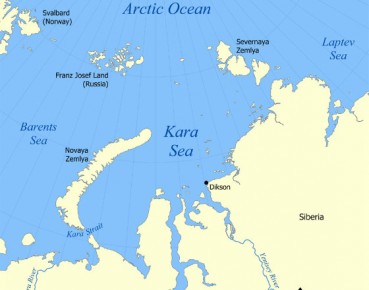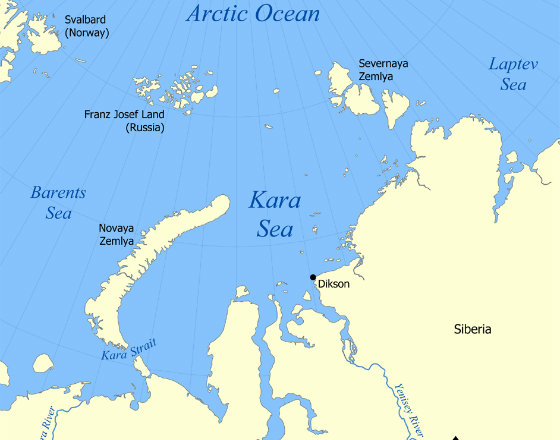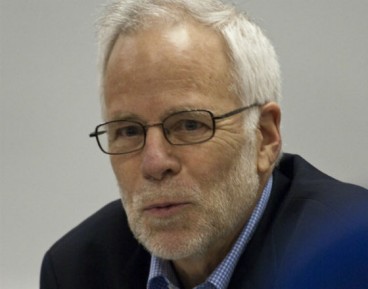Russia is too small to win the war in Ukraine
Category: Macroeconomics

(NormanEinstein, CC BY-SA 3.0)
Russia’s “National Action Plan for Adaptation to Climate Change for the Period up to 2022” reads very differently from the equivalent policy papers drafted by experts in Brussels. To start with the name itself; there is no mention in the title of the document — same goes for the remaining 17 pages — of the need to “combat” or “fight” climate change.
Strategic policy papers made by experts in European countries and EU institutions usually approach the issue of global warming from a different perspective; it is a problem that needs to be fought and, ideally, reversed.
Russia choses a different approach. Instead of trying to actively reverse the process of global warming, carefully monitored by Russian researchers, Moscow plans to simply adapt its economy to the rising temperature. This is despite the fact that, according to the document, Russia has been facing faster increases in temperature than most other places across the globe.
“Average annual air temperature near the Earth’s surface in the Russian Federation has been rising by an average of 0.47 Centigrade every decade since the mid-1970s, which is 2.5 times higher than the growth rate of the average global air temperature (0.18° per 10 years),” the document says.
Rest assured, even Russian policy makers are quick to point out the threats that rising temperature present to Russia’s economy and society. “The negative consequences of climate change for the Russian Federation include: increased risk to public health; an increase in the frequency, intensity and duration of droughts in some regions, extreme rainfall, floods and waterlogging of soil dangerous for agriculture — in others; increased fire hazard in forests; permafrost degradation in the northern regions with damage to buildings and communications; violation of ecological balance, including the displacement of some species by others; the spread of infectious and parasitic diseases; and increased energy consumption for air conditioning in the warm season.”
However, at the same time, the paper points to a number of ways in which Russia could benefit from climate change. “Reduction of energy consumption during the heating period; improving the ice situation and, accordingly, the conditions for the transportation of goods in the Arctic seas, facilitating access to the continental shelf of the Russian Federation in the Arctic Ocean; improving the structure and expansion of the hardiness zone, as well as increasing the efficiency of animal husbandry, and increased productivity of boreal forests.”
Hopes for Arctic traffic
It is particularly the thawing ice in Russia’s arctic north that makes policymakers in Moscow hopeful about the future. Russia’s policymakers see the cracking ice sheets along the coast of Russia’s far north as a unique opportunity to revitalize the economy of the country’s northern regions.
Historically accessible for marine traffic only during the warmer months, Russia’s Northern Passage is now gaining in significance as traffic slowly becomes possible almost all year round. The Northern Passage shortens the transport distance from northern Europe to northeast Asia and northwest North America by up to 50 per cent relative to the alternative southern routes through the Suez or Panama canals. By extension, it is assumed that the increasing traversability of the Arctic route will naturally lead international freight companies, eager to push down expenditures, to reconsider their shipping lanes choices (read more).
During the last couple of decades, the seemingly irrevocable Arctic sea ice retreat has already gravely impacted the Arctic marine transport systems and shelf exploration, and a lots of studies seem to support the claim that this trend will continue in the years to come.
In order to reach the Northeast Passage’s full potential, Russia has been allocating large amounts of money to the development of its nuclear-powered icebreaker fleet. According to some estimates, eight more nuclear-powered icebreakers will have to be built if the Kremlin is to reach its ambitious increases in shipping tonnage volumes goal by 2029.
The Russian government plans to build a unified transport system that includes the Arctic that would be used as a sort of a national maritime super highway, connecting several different ports along the Northeast Passage to a system of railroads and rivers in the northern parts of Russia, including several important mining settlements such as Norilsk, that are cut off from the “mainland,” as the rest of Russia is known to the locals of these towns. Improved infrastructure would bring the periphery closer to the center, allowing it to benefit from the economic interaction.
Currently all the supplies, from food to fuel, has to be flown into these towns, vastly increasing the costs, especially for social groups like pensioners, who are trapped in these settlements thanks to their inability to sell their apartments.
However, despite’s Moscow efforts to attract international freight companies on the Northeast Passage, many risks involved in traversing the Arctic route discourage companies from taking full advantage its potential.
Multiple studies of the Arctic warn about high risks due to waves and accompanying storm surges and coastal erosions. And that is not to mention the icebergs that will pepper the northern seas. Most of these natural problems forces are expected to be particularly prevalent in the Northern Passage.
In other words, it might still take years to make the Northern Sea Route a viable alternative for freight companies to other major shipping routes, such as the Panama Canal route. The advantage of the Norther Route is that it is by far the shortest shipping route from Europe to Asia. However, that advantage has so far been canceled by the incremental investment in ice-breaking ships, which the commercial vessels need to be accompanied by.
Once this is no longer a necessity, Russia’s northern coast could become a beaming center of industrial activity.
Filip Brokeš is an analyst and a journalist specializing in international relations.



